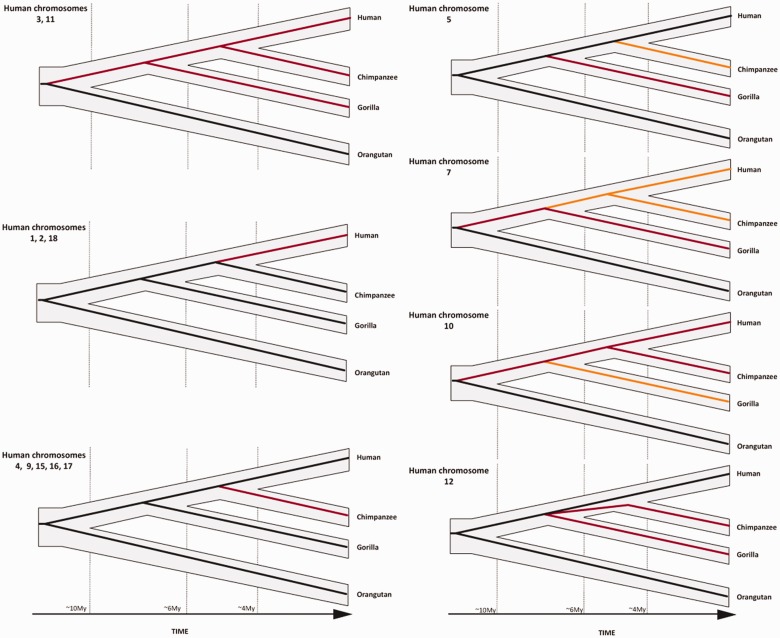Fig. 1.
Evolutionary history of human chromosomes superimposed on the phylogeny of great apes. Black lines within the phylogenetic tree represent the ancestral state of the chromosomes, whereas red and orange lines represent the rearranged forms. Orangutan maintains the ancestral form for orthologous chromosomes 3 and 11, whereas human, chimpanzee, and gorilla forms are derived. Orthologous chromosomes 1, 2, and 18 have been rearranged in the lineage leading to humans, whereas orthologous chromosomes 4, 9, 15, 16, and 17 are rearranged in the lineage leading to chimpanzee. Ancestral chromosome 5 has been maintained in orangutan and human but has suffered two independent inversions in chimpanzee and gorilla, respectively. Chromosome 7 has suffered one inversion, which has been fixed in gorilla, and another inversion has been fixed in the lineage leading to human and chimpanzee. Chromosome 10 underwent one inversion that was fixed in human and chimpanzee, and a new inversion fixed in gorilla. Finally, chromosome 12 has maintained the ancestral form in humans and orangutans but has undergone an inversion that has been fixed in chimpanzee and gorilla, therefore, the polymorphic state has persisted across multiple speciation nodes (gorilla–human–chimpanzee and human–chimp).

